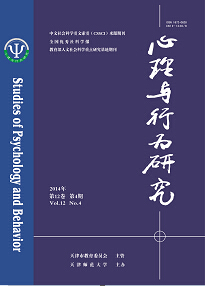|
|
The Mechanism of Phonological Processing: Evidence from Functional Near Infrared Spectroscopy Technology
Yang Haibo, Zhang Xuejian, Zhou Song, Liu Ying, Bai Xuejun
2014, 12(4):
566-571.
As a new technology of functional brain imaging, Functional Near Infrared Spectroscopy Technology (fNIRS) have been developing for more than ten years. Compared with other imaging research methods, its advantages are obvious: easy-to-move, low cost, relatively non-sensitive to motion artifact. This paper first introduced the principle of fNIRS technology, algorithm type, application and its characteristics, and then summarized the progress in the field of speech processing with fNIRS, including sound length, sequence of phonemes, syllable structure, stress, intonation, etc. Finally, based on previous studies, a few suggestions for the development of Chinese phonological processing with fNIRS were proposed.
|

